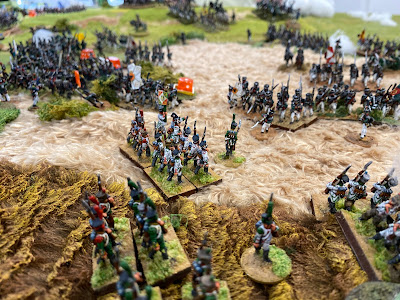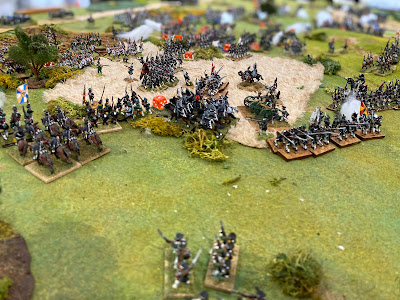venerdì 22 settembre 2023
The army of Carthage painted by Aurelian Leclerc
venerdì 15 settembre 2023
Battle of Cape Spartivento or Battle of Cape Teulada – Nimitz Sept 2023
On the night of November 17, 1940, an Italian force including two battleships (Vittorio Veneto and Giulio Cesare) and a number of supporting unis decided to intercept two British convoys en route to Malta.
On November 17, the British were warned of Italian approach and immediately turned and returned to Gibraltar, launching their aircraft (two Blackburn Skuas and 12 Hawker Hurricanes) prematurely. One Skua and eight Hurricanes were lost at sea, as they ran out of fuel well before arriving at their destination, with the loss of seven airmen.
The British decided to organize a new convoy. It was organized with and increased support including ships from Gibraltar and Alexandria.
At around 12:40, eleven Swordfish from Ark Royal attacked Vittorio Veneto with torpedoes, but did not score any hits.
At 13:00, Vittorio Veneto opened fire from 27,000 metres (30,000 yd). Vittorio Veneto fired 19 rounds in seven salvoes from long range and that was enough for the now outgunned British cruisers, which turned back. In fact, as giant water-spouts erupted around Berwick and Manchester, the British commadner ordered smoke, and his ships fled southeast to close with Renown. Both forces withdrew, the battle lasting a total of 54 minutes and causing little damage to either side.
venerdì 21 luglio 2023
Studio Tomahawk'Jugula review
In the last weeks my club mates played some matches using Jugula ... a Studio Tomahawk rule system set in Roman Empire. Jugula is a bit different respect other "classical" wargame because you will be a "Lanista" in stead of a commarders, generals and so on.
The lanista was, essentially, an entrepreneur who traded in gladiators and rented them to the organizer (editor or munerarius) of the gladiatorial show (munera) drawing his own profit which did not diminish even if the gladiator died during the fight.
Normally the lanista was an ex gladiator assisted in his activity by the doctores (or magistri). Skilled veterans freed from the status of gladiator who, having concluded thier activity, had been awarded the rudis (a wooden sword).
The lanista is the focus of the game ... this is the reason for which, in this game, the rules managing combat in the arena are all about decisions, rather than hit, move and blade types. Jugula allows the players to manage the development of their own gladiators. Combat area in a square grid ... not very different respect a chess board.
Jugula uses a card system that, during the arena fights, allows the lanista to control and manage his gladiators. During the game the player has to choose the correct cards but also the correct way to use them. A card can uses: for movement, for increase your popularity (called Vox Populi that can give some bonus combat and increase the size of your card hand), for combat, for draw other cards, for use card's ability or for a kind of upgrade (Prima Jugula card).
The player has a team of 4 gladiators (famila). Every gladiator has his stat (movement, combat, skills and so on) and card. The player can choose from: Murmillo, Scissor, Hoplomachus, Provocator, Secutor, Crupellarius (heavy) and Veles, Tharaex, Retiarius, Sagittarius, Dimachaerius, Laquearius (light).
Generally you cannot attack and move in the same. You get bonuses for attacking the flank or the rear but you must choose your movement carrefully because you can attack only the three squares immediately to miniature's front
The combat is easy: your gladiator's attack factors (plus modifiers) against opponent's defence. Modifiers could be: the drawing card value you and your opponent must put on the table or Vox Populi for example.
Four points win the game. An enemy's gladiator wounded: 1 point. An enemy's gladiator killed: 2 points.
You can play it in a campaign version. Every players (Lanisti) spent money to train gladiators, to hire mercanaries, to sell or to buy new minis and so on. The lanista goal is to gain glory and to win the game.
The game is easy to play and funny. In our club we started a campaign that is rich of interesting and amusing combats
venerdì 23 giugno 2023
Maxi Napoleonic scenario - Black Powder June 17, 2023
On the center Russian Corp try to create an hole and capture Emperor’s carriage but a fresh Napoletan force block them avoiding a catastrophic event.
At the 11th turn the Guard arrives launching the cavalry against the first Austrian unit that try to block the Emperor.




































.JPG)












